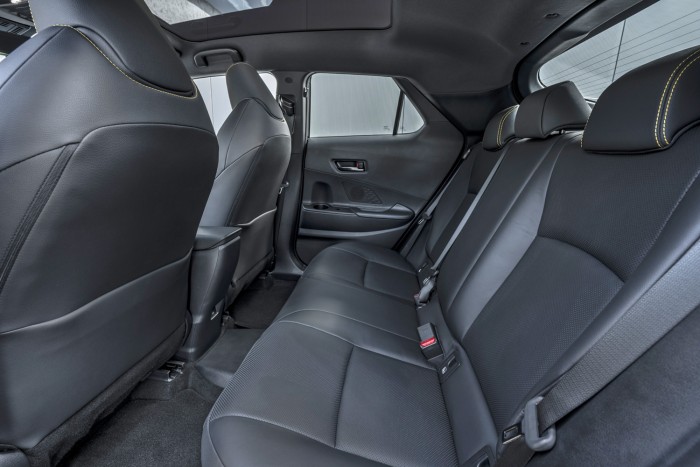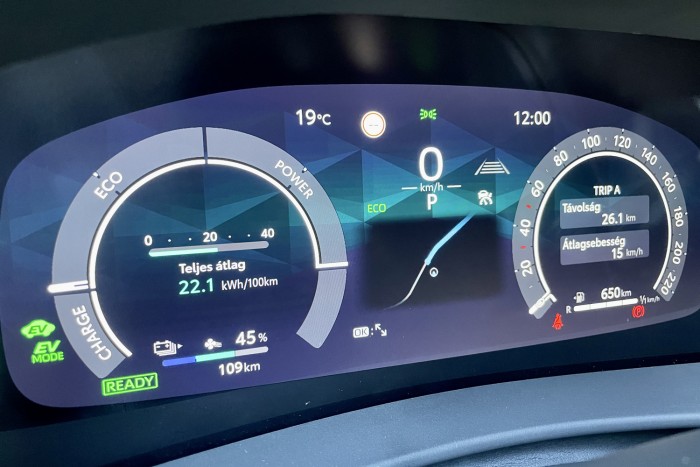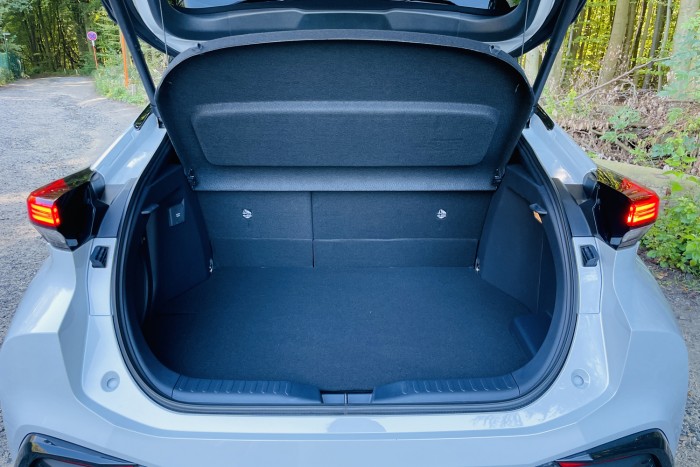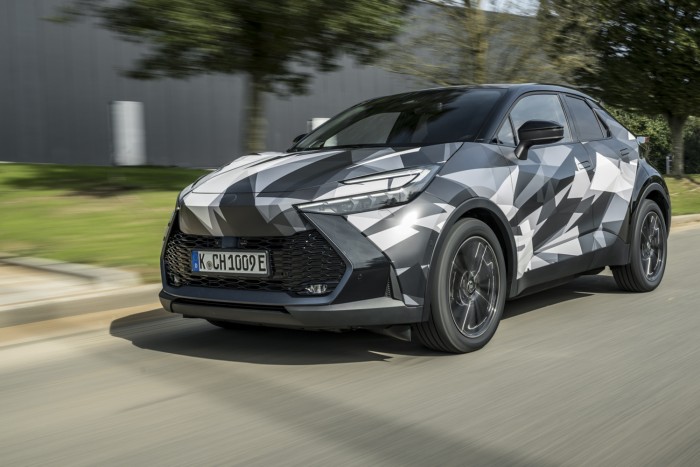In the passenger compartment, we encounter the curves of the dashboard and the plastic surfaces that extend over the door panels, which factory workers simply call wings. All controls are concentrated in the driver’s cockpit, while the horizontal design of the dashboard and the winged shape give passengers the feeling of being surrounded by the cabin.
It is a pleasure to look at, and the ergonomics and harmony on the driver’s side are almost perfect, but when sitting, the front passenger can bend his knees properly. For this reason, traveling even in the rear section is somewhat more comfortable than in the front section.
It’s a bit narrow, and a passenger can bump their knee when boarding
The well-shaped sports seats – which we were able to sit on on a test drive, the top model with GR Sport equipment received – provide excellent lateral support, and the driver’s seat is electrically adjustable. When getting into the back, as in all coupe-type SUVs, you have to keep your head down. The back seats are very comfortable, and the seat is well shaped.
Fortunately, our knees meet a soft and pleasant material in the back row, which is exactly what the engineers paid attention to, and which has a good effect on noise comfort as well as the feeling of quality. The car is narrow in the back, headroom is generous, and legroom is good, but our knees hit the door. Two is fine, but the back row is not recommended for three adults.
Although the rear seatback folds 40:60, the C-HR rarely carries bulky items – the wiper-less rear window is simply too flat to allow this. The trunk is average, and doesn’t offer much practicality. There are plenty of storage compartments, although it’s not very spacious, and the door pockets only fit small bottles. Fortunately, larger smartphones also have a place for inductive charging.

It’s narrow at the sides, with plenty of head and legroom in the back
Depending on the equipment level, you can get acquainted with the current driving data on a 12.3-inch digital instrument console and an 8- or 12.3-inch customizable central touchscreen in Hungarian and not very complex and customizable. It runs Apple CarPlay and Android Auto wirelessly, and also offers online services. More recently, the car recognizes its driver and automatically calls up his personal display settings when he unlocks the C-HR using a digital key linked to his smartphone, which will only be available from 2024.
Also later, a remote-controlled parking robot enters service in the C-HR. The vehicle’s on-board software can be updated via a wireless connection, so that new functions are introduced flexibly and almost unnoticed. The car was equipped with driver support services, such as a safety system that prevents accidental acceleration, and an assistant that changes the steering assistant according to the turn and speed, but the Japanese promised support for changing lanes, a surveillance camera for the driver, and even a self-monitoring system. Driving function that allows hands-free driving in traffic jams.

Its instrument cluster is digital
The digital instrument cluster can be customized, and three pre-set themes can be selected, but it prioritizes different contents according to the driver’s preferences or trip conditions – for example, you can prioritize information related to the active protection function when the car is driving on the motorway. Content can be customized using the keys on the steering wheel.
Mood lighting can be selected from 64 colours, which the car can vary in 24 different colors depending on the time of day and temperature. The same color creates a subtly energizing atmosphere in the morning and a calming atmosphere in the evening, but the intensity of the color may change in warm or cold weather. Mood lights also increase safety: in addition to the audible and visual warnings of the Exit Assist system, the interior lighting, which turns red, also draws the driver’s attention to pay attention to vehicles coming from behind when the door is opened.

Its boot volume is 310 litres, which is only for a small car
A special coating for the premium panoramic sunroof (supplied by AGC, which is also made in Hungary) keeps the infrared rays that heat up the passenger compartment away, so according to Toyota, there’s no need for a sunshade. We were thus able to save five kilograms of weight, and the absence of curtains made it possible to create three centimeters more spacious headroom.
During the sustainable production of the car, twice the amount of recycled plastic was used as in the previous model, the bumpers are colored in the material, so they do not need painting, the steering wheel is covered in vegan leather, that is, faux leather, and the paints are water-based. Some of the seat upholstery is made from plastic obtained from 100 percent recycled PET bottles, and the velvet-effect coatings contain 45 percent recycled materials. Proven and durability tested in a serious laboratory at the Belgian test center.












































